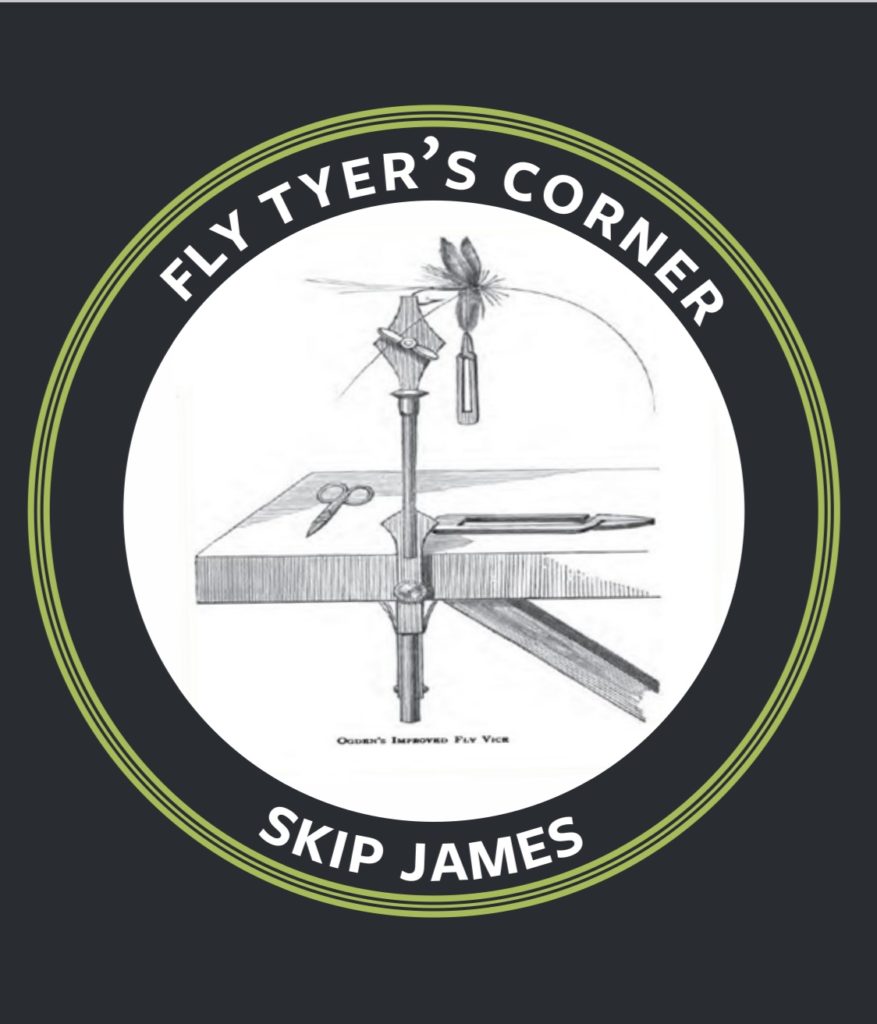Skip’s Loose Threads
How do I get started tying flies?
One of my colleagues at work mentioned that her husband was a fly fisher, but that he was making noises about taking up fly-tying as well. She wanted to know what she could buy to get him started in the right way. I’m sure that there are lots of folks out there in the same boat, and a little guidance might help. So here goes.
The first requirement is a comfortable space; a good, comfortable chair in front of a white or light colored piece of wood or laminate, thick enough to be stable, but thin enough to fit the vise’s clamp. One friend used a folding chess board, to which he glued two pieces of white board. Another lays down a white placemat on his desk. I bought a simple desk at Scandinavian Design about 25 years ago that is built from white melamine that serves as my tying table now. Is Scandinavian Design still in business? I just checked, and the answer is “yes.” They even have a desk like mine, but not in white.
The second requirement is a really good light source. I have a pantograph lamp that uses two bulbs, one incandescent in order to capture all the natural colors, and one fluorescent for brightness. I use a 100 watt bulb that I replace every few years by buying one on Ebay. The fluorescent bulb has never been replaced…knock on wood… it’s forty years old! I also use a large magnifying glass, 4 inches in diameter, that I can position between my eyes and the
business end of my vise to make those #22 Tricos easier to tie. There are ‘goose-neck’ fly tying lights that throw a narrow beam of light, but when I’ve had to use one of those my eyes got tired very fast. When you are tying on the road, the desk light in most hotel rooms
is adequate if not ideal.
Then, you need a good vise. The jaws of the vise should hold hooks firmly enough that you can bend the shanks with pliers while the bend of the hook is secured in the vise. The jaws should also hold the various sizes of hooks that you will be using. If you tie trout flies, you don’t need a vise that’s capable of holding size 3/0 bass bug hooks. There are several ways to open or close the jaws of a vise, and most of them employ a cam or lever, sometimes with an
adjustable collet and sometimes not. There are many vises available, with all sorts of gadgets on them to rotate, hold a bobbin, hang a tool, or secure a thread, but what’s truly necessary are really good jaws and a simple way to open or close them. I use a Regal Inex vise, which runs around $150. It has a clamp base to secure it to my tying desk. I still have the vise I bought when I was 11 years old, an AA manufactured by DH Thompson.
That brings up a problem. Your fly-tying place better have plenty of places to store stuff because you’ll never, ever, throw anything away. You can buy small tools like scissors, bobbins, whip-finishers, and hackle pliers in a kit or individually. You generally get what you pay for in terms of quality. I love Matarelli bobbins and Ice Scissors.
Complete fly tying kits are available, and may appeal, but my experience is that half of what comes in the kit you will never use, and you’ll be running back to the fly shop to buy more of what ran out. If anyone would like to discuss this with me, let me know. My phone number is 715-690-4503 and my email kplmstr1@mac.com.


